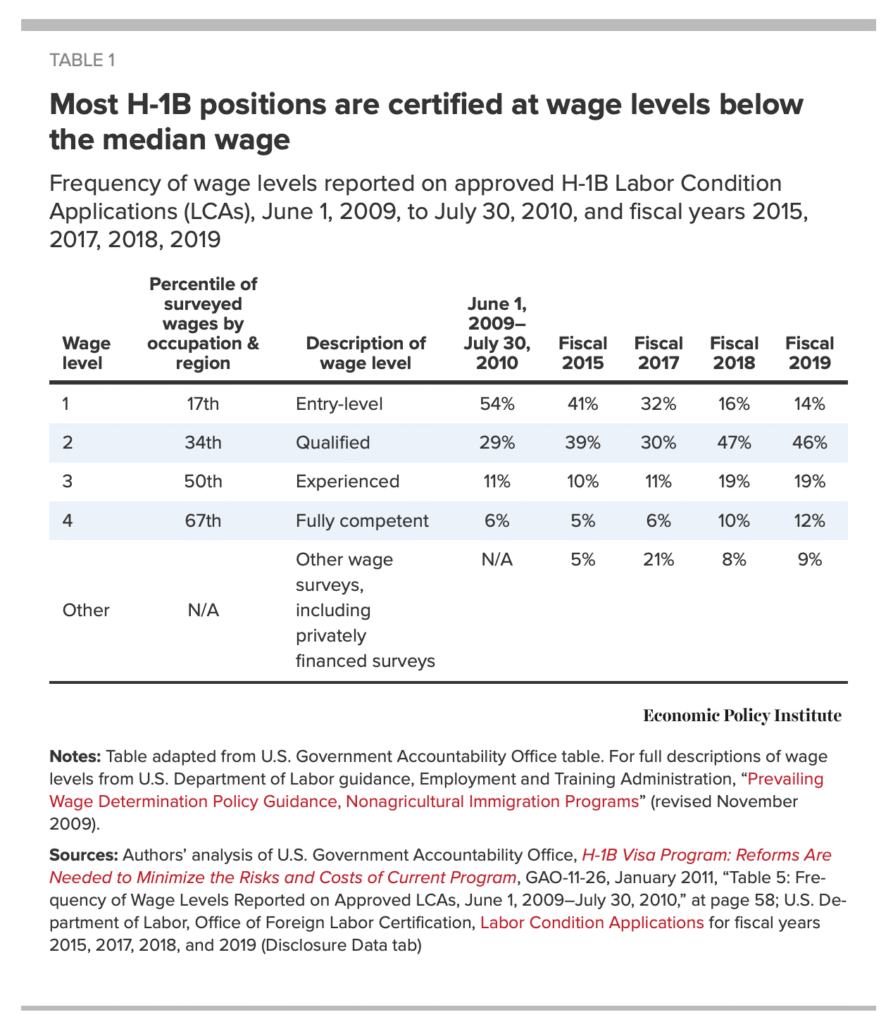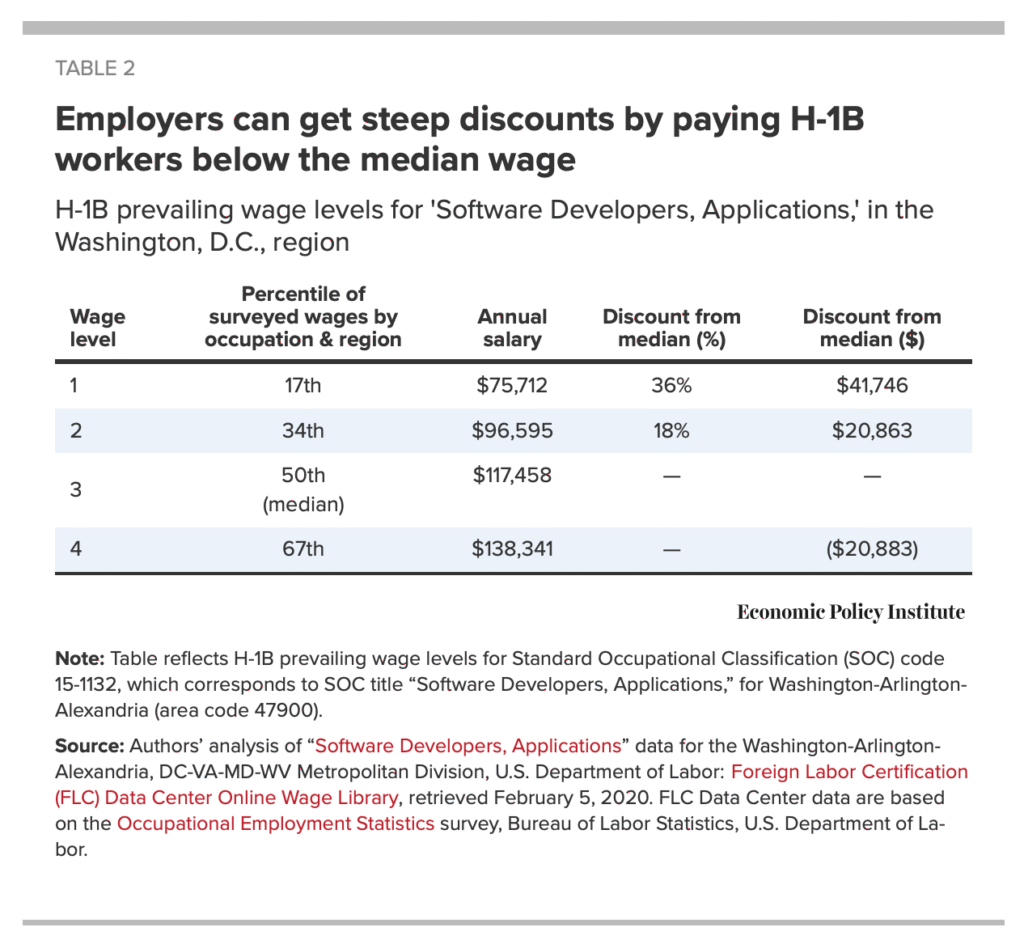India’s booming IT and outsourcing sector, a $200+ billion industry employing millions is a critical engine of the global economy. Yet recent investigations reveal a troubling underbelly: widespread labor abuses and legal violations that leave many tech workers overworked, underpaid and vulnerable.
This shocking and investigative report about labor violations in Indian IT Outsourcing Companies examines documented cases of wage theft, forced overtime, misclassification of workers, heavy-handed NDAs, and caste/gender discrimination in major Indian tech firms (like TCS, Infosys, Wipro, HCL, Tech Mahindra) as well as foreign tech companies operating in India.
We focus on hotspots such as Bengaluru, Hyderabad, Pune and Noida, and even Indian IT campuses abroad. Our investigative narrative includes worker testimonies, union actions, expert analysis, infographics, and comparisons to other countries’ tech labor issues, all supported by primary source citations.
Outrage Over Forced Overtime and Unpaid Work Because of Labor Violations In Indian IT Outsourcing Companies
Tech companies in India often sidestep standard labor laws on working hours. Under normal Shops & Establishments rules, the maximum workweek is 48 hours, with overtime capped at a few extra hours. But IT and BPO companies exploit legal exemptions and weak enforcement. In Karnataka, for example, the IT industry has been exempted since the 1990s from the state’s overtime regulations.
The result is a common “survival mode” culture of 12–14 hour days. At a large Bangalore protest in March 2025, software developer Sahil (pseudonym) explained how company contracts list 9-hour days, but after “reaching home, bosses call up and assign more work.” He said, “No overtime is paid. But no employee dares refuse the unpaid work… Everyone is ‘in survival mode’, fearing that their job might be next on the chopping block”.
This anecdote reflects a grim reality documented by labor unions and health experts. A joint report by Onsurity and the Kanara Chamber of Commerce found that over 50% of Indian tech professionals average 52.5 hours per week — roughly 10.5 hours per day for a 5-day week. Such schedules vastly exceed the statutory 48-hour cap (8 hours/day, 6 days/week) and raise serious health risks.
The World Health Organization (WHO) warns that working 55+ hours a week raises stroke risk by 35% and heart disease deaths by 17% compared to a normal 35–40 hour schedul. Indeed, doctors cite rising cases of cardiac problems and burnout. One report noted that though tech workers are less than 4% of Karnataka’s labor force, they now account for 20% of organ transplant patients in the state, attributable to sedentary lifestyle and stress.
University of Hyderabad research echoes this health crisis: “nearly 85% of surveyed IT employees suffer from fatty liver disease,” a stress-related condition, and most suffer burnout, insomnia and anxiety.
Workers’ groups are sounding the alarm. The Karnataka State IT/ITeS Employees Union (KITU) organized dramatic protests. In one viral scene, around 700 tech workers set ablaze a cardboard portrait of Infosys co-founder N.R. Narayana Murthy (worth an estimated $5 billion) inscribed with “70-hour work week”, referencing Murthy’s public call for longer hours.
A KITU leader challenged Murthy’s remarks, saying workers “are not corporate slaves” and that even family time is unfairly attacked. His colleague Rashmi noted, “Narayan Murthy and S.N. Subrahmanyan have the audacity to tell us that we are not working hard enough… They are shamelessly telling us that spending time with our family and loved ones is a waste… Instead, we should work [even] on Saturdays and Sundays to fatten their wallets and die”.
In Hyderabad a similar protest saw union and women’s activists carrying placards like “9 HOURS WORK” at an L&T office. There they demanded that chairman S.N. Subrahmanyan retract his call for a 90-hour week, warning such policies “turn the entire workforce into slaves”. Demonstrators in Telangana even quoted grim statistics: the 2022 National Crime Records Bureau reported 11,486 worker deaths nationwide, implying that adding more hours is literally a life-or-death risk.
Comparison – Global Overwork
India’s tech overtime problem is part of a wider phenomenon. Studies show an uptick in unpaid hours globally since the pandemic. In Japan, decades of extra shifts led to “karoshi” (death by overwork) and other health crises. The ILO noted Japanese workers under extreme stress often work up to 80 hours per week, with fatal consequences.
In China, tech startups famously enforced “996” schedules (9am–9pm six days a week) and even harsher “896” models, sparking worker backlash. These international parallels have spurred calls to reform India’s lax enforcement before a similar crisis erupts. One academic warns that if India’s overtime continues unregulated, it risks a crisis akin to Japan’s.
Wage Theft and Discrimination in Pay
Beyond hours, pay practices also violate law and ethics. Under the law, overtime work in India should pay double time beyond the 48-hour threshold. In practice, IT employers often label long hours as “flexible time” with no premium pay, or simply do not track them. Some even dodge overtime entirely by classifying all workers as managers who “set their own hours.”
Unions contend this is a widespread ruse. In 2019 and 2020, three Hyderabad IT employees filed a Public Interest Litigation alleging major firms forced 10–12 hour days with no overtime pay. They noted that a 2002 government order explicitly exempted IT/ITES from Shops & Establishments rules, allowing companies to override limits on hours, breaks and termination protections.
That loophole persists: each new state government has renewed the exemption. Critics say this de facto deregulation led to unchecked exploitation: “the IT sector…have [sic] filed a case against their employers” for leave and overtime abuses.
At the international level, the wage disparity is stark for visa workers. A 2023 Economic Policy Institute study uncovered that HCL Technologies internally pays its H-1B visa holders dramatically less than equivalent U.S. employees. In one comparison, HCL’s own records show some roles where Indian-origin H-1B workers earned 47% less than American counterparts.
The disparity was pervasive: “in virtually every skill and job role, HCL systematically pays H-1B workers much less than its U.S. workers.” (See infographic below.) These findings echo broader trends: a U.S. lawsuit (brought by a former HCL executive) accused the firm of intentionally disadvantaging American employees.

American tech workers have sued multiple Indian outsourcing firms for similar biases. For example, in 2013, Infosys paid $34 million in civil fines after a U.S. Justice Department probe found it had underpaid foreign H-1B workers. That same year, Infosys faced a class-action suit for allegedly rejecting job applicants “not of South Asian descent” in its U.S. offices.
Recent reports show legal trouble is not over: as of 2025 dozens of former U.S. employees have filed complaints against TCS with the U.S. Equal Employment Opportunity Commission. They allege older, non-South-Asian professionals were targeted in layoffs while Indian H-1B colleagues were spared. Even TCS’s co-founder was being probed in the UK for similar accusations. Meanwhile, Cognizant recently lost a U.S. federal jury verdict after over 2,000 non-Indian workers proved they were intentionally passed over for jobs. These cases underscore a disturbing pattern: discrimination masked as meritocracy.
Within India, wages are also stagnating even as firms post huge profits. Industry data suggest that despite revenue growth, “productivity per rupee spent on employee compensation has remained flat,” with little pay growth to match workloads. Workers report that pay raises or promotions often go to younger, cheaper labor.

Senior engineers like Mahesh (age 52) told protest crowds that management “has no understanding of technology” and doesn’t value veteran staff. Instead, companies pursue “bottom-line management,” offloading older, higher-paid talent and saddling remaining employees with extra tasks. Techies report withheld bonuses, delayed increments and bogus “performance improvement plans” as pretexts to cut jobs without paying statutory severance.
Coerced Layoffs and Resignations
An equally troubling trend is the use of layoffs and forced exits. Union groups claim many major IT firms violate the Industrial Disputes Act by not notifying or compensating workers when cutting jobs. In late 2025, the Nascent IT Employees Senate (NITES), a pan-India IT union, alleged that TCS “forced nearly 2,500 employees in Pune to resign or [be] abruptly removed in recent weeks”.
These were largely mid-to-senior engineers — many over age 40 and facing heavy financial burdens — who according to NITES were given ultimatums to “voluntary[ly] resign” instead of being formally laid off. The union wrote to the Maharashtra government, warning that this practice bypassed legal retrenchment compensation and was pushing families into “emotional trauma and financial collapse”. TCS publicly denied wrongdoing, calling any such claims “inaccurate and purposefully mischievous”.
Similar allegations have surfaced at other firms. A national union Facebook page reported synchronized protests across Chennai, Kolkata, and Noida in late 2025 after simultaneous news of large tech layoffs. In Noida, many Salesforce and IBM India workers faced indefinite “benching” and non-renewal of contracts, sometimes without explanation.
Meanwhile, multiple consultants recently quit Amazon India over delayed salary payments and hostile work environments – invoking local labor laws against such exploitation. Many of these under-the-table cuts use NDAs and confidentiality clauses to seal lips. Although Indian courts generally honor well-crafted NDAs, they cannot enforce terms that effectively block an employee’s ability to find new jobs.
Lawyers note that broad NDAs are enforceable only if “reasonable” and not overly restricting future work. Still, in practice companies leverage NDAs to prevent whistleblowers from exposing practices such as wage theft or unsafe conditions.
Gig, Contract and Agency Labor
The bulk of media attention focuses on the permanent staff of big IT firms, but the problem extends deep into subcontracting and the gig economy. Many tech companies routinely hire programmers and IT support through third-party contractors, staffing agencies or freelance platforms. These “contractors” may do identical work to regular employees but on inferior terms: lower pay, no benefits, and termination without severance.
Union campaigns in Karnataka have specifically demanded an end to the “contract system” in the tech sector, calling it a source of rampant abuses. Indeed, protesters in Hyderabad listed as demands the elimination of contract labor and regularization of third-party IT workers.
In the gig economy, the situation is even murkier. Freelance marketplaces like Upwork boast large numbers of Indian software freelancers, who often bid at very low hourly rates with little legal recourse. The 2020 Indian Social Security Code theoretically extended protections (health insurance, pensions) to gig and platform workers, but this law has not been implemented as of 2025.
In practice, gig IT workers and contract coders have no collective bargaining power, no guaranteed minimum hours or pay, and few safeguards if a client reneges. A 2024 case of food-delivery “gig” workers (on an app called Urban Company) highlighted how companies classify workers as “independent” to avoid even basic coverage – a strategy common in IT freelancing too. The Urban Company example is telling: a union sued, alleging the firm treated its mostly-female workforce as contractors to dodge benefits. Though that case was outside IT, it underscores the unchecked risks for any Indian worker labeled “contractor.”
Caste and Gender Discrimination
Indian society’s deep-seated hierarchies have also crept into the tech workplace. Though not always openly acknowledged, caste bias is pervasive. In a 2022 survey by Rest of World, numerous tech workers mostly from lower castes (SC/ST/OBC) shared experiences of prejudice. One Dalit engineer in Bengaluru recounted how, after revealing his caste, a coworker taunted him with: “I didn’t know you were a reservation guy,” referencing India’s affirmative-action quotas.
He said he felt immediately ostracized. As another worker summarized: “Caste discrimination is felt at a deeper level… One need not say anything, but small actions, intonation, or even body language emit bias against disadvantaged castes in the workplace”. All of this belies the sector’s meritocracy myth. In fact, an industry analysis notes India’s tech industry is huge (about $194 billion, employing 4.5 million people), yet it remains largely unregulated on diversity.
Private tech firms are not legally bound by government caste-quotas, so many upper-caste managers still staff teams with those from their own networks or elite schools, perpetuating inequity.
Gender bias is similarly entrenched. Women comprise a minority of IT staff, especially in senior roles, and many face a “double burden.” A 2024 survey of 24,000 Indian women professionals (Aon’s “Voice of Women”) found 40% had experienced workplace bias or insensitivity, and about 6% had faced sexual harassment (only half of whom reported it). Working mothers report hitting a “motherhood penalty”: 75% said maternity leave set them back 1–2 years in career progression, and 40% said their pay suffered afterward.
In day-to-day life, women coders frequently describe a hyper-competitive, male-dominated culture. Anecdotes include being passed over for promotions in favor of less-experienced male colleagues, or being excluded from code review sessions and offsite trainings. At protests, women activists from the All India Democratic Women’s Association (AIDWA) joined labor unions to highlight these issues. For example, Hyderabad demonstrators explicitly demanded minimum wages and job security – issues affecting contract workers and women alike.
Workers and Unions Speak Out
Though formal unions in IT are rare, grassroots organizations and employee collectives have begun challenging these practices. In 2017 Karnataka became the first state to recognize an IT/ITES workers’ union (KITU). By 2025, KITU had a membership across major cities and a track record of pushing companies to alter abusive practices. At the Bengaluru freedom-park rally, KITU leaders announced that the union had successfully forced dozens of rehirings.
As one protester said of a recent case: “I have two kids. I cannot afford to lose my job,” he told the crowd, explaining how KITU helped reinstate over a hundred unjustly terminated tech workers, winning disputes against giants like Wipro and Tech Mahindra. Such victories show that collective action can yield results, albeit slowly.
Elsewhere, IT professionals have mounted class-action suits abroad. In the US, dozens of former Indians working at TCS filed EEOC discrimination charges in late 2023. The Washington Post reported Americans were being benched or fired at higher rates than Indian H-1B holders.
In October 2021 a federal jury even found Wipro liable in a lawsuit for systematically replacing American employees with lower-paid visa workers (Wipro agreed to a $53 million settlement). (Wipro itself denies wrongdoing, and it’s common for companies to insist that workforce changes are merit-based, not bias.) These international cases highlight a form of exploitation: Indian tech firms staffing U.S. projects with offshore talent while paying locals less.
In India, tech workers have few formal grievance channels. The Employee Grievance Redressal (POCSO) framework rarely covers white-collar IT workers, and bodies like the labor commissioner’s office are under-resourced and often uninformed of IT nuances. The unions demand that existing labor laws (Shops Act, Payment of Wages Act, etc.) be enforced uniformly in IT parks.
At the 2025 protests, speakers demanded codifying the “Right to Disconnect” to prevent after-hours calls, legally limiting shifts to 8 hours, and having the state withdraw IT-specific exemptions. The union also insisted that companies be made to comply with laws on notice and severance for layoffs, and to ban the “contractor” loophole.
Comparative Insights from Abroad
Similar labor uproars have occurred in other outsourcing hubs. For instance, call-center workers in the Philippines and Latin America have long complained about gruelling night shifts and low pay, prompting new rules on shift rotation and overtime pay in some countries. In China, tech and manufacturing unions (state-sanctioned) have occasionally protested late hours and unpaid work.
Western tech giants also face scrutiny: a 2023 Bloomberg News exposé revealed Amazon India warehouse and corporate employees staging sit-down strikes over workloads and pay. (While not directly in outsourcing, it reflects global supply chain pressures.)
In the U.S. and Europe, tech workers have similarly banded together to demand changes. The IBM and Google employee walkouts of 2019-22 over discrimination and contract abuse are examples of a broader shift. Even in high-regulation markets, gig economy platforms face backlash: in 2021, the California Uber/Lyft drivers won a referendum (Prop 22) on worker classification, and the EU proposed new gig-worker protections. These movements underscore an international trend: workers in digitally mediated jobs are increasingly organizing for rights.
Yet, Indian tech is still relatively new ground for unionizing. The 2025 Bangalore march (700+ protesters) and Hyderabad rallies in January reflect a growing awareness. Observers compare it to earlier struggles in public-sector unions or manufacturing; tech workers have historically avoided unions, believing they have limitless opportunity. But the recent layoffs and exploitative demands shattered that illusion for many.
Case Focus: Bengaluru, Hyderabad, Pune
Bengaluru (Bangalore)
India’s Silicon Valley was ground zero for the “We are not corporate slaves” protests on March 9, 2025. There, workers burned effigies and brandished banners demanding enforcement of the nine-hour workday and unpaid overtime policies be reined in. KITU leaders spoke of victory in reinstating wrongly fired employees.
Multiple protests had taken place in 2024 as well, including a December Bangalore march of hundreds over pending salaries and layoffs. Analysts note that Karnataka’s government originally exempted IT from labor laws in the 1990s, and a recent legislative bid to extend workdays to 14 hours was reportedly shelved only after public outcry.
Hyderabad
In January 2025, CITU and AIDWA activists picketed the Hyderabad office of L&T in reaction to the chairman’s 90-hour workweek comment. They also condemned similar overtime cheers by Infosys’s Narayana Murthy. Protest leader Venkatesh cited alarming NCRB data to argue that current 8-hour standards were already not safe, so pushing to 15-hour days “is nothing but… turning the entire workforce into slaves”.
The organizers demanded standardizing a 7-hour shift, five-day week, a higher monthly minimum wage (₹26,000), elimination of all contract labor, and regularization of existing contract staff. This militant protest earned local headlines and prompted a promise from the state’s labor department to review outsourcing layoffs.
Pune
In late 2025, the TCS layoffs scandal broke. TCS had announced a global 2% staff cut (roughly 12,000 jobs), and Pune (an IT hub) reported hundreds of mid-to-senior level engineers abruptly forced out. NITES claimed that around 2,500 Pune employees were made to sign resignations under duress.
Many affected were over 40, supporting families; the union warned the government that TCS ignored the requirement to notify labor authorities and pay retrenchment benefits. This spurred an official inquiry. The Pune episode highlights a broader pattern: by outsourcing attrition to ‘voluntary’ schemes, firms evade legal costs, leaving victims scrambling for justice.
Voices of the Affected
Personal stories bring these issues to life. In unpublished interviews with Rest of World, lower-caste engineers described subtle daily slights and limited networks within companies. One corporate manager confided that women were often paid less or sidelined after marriage. Another Bengaluru programmer said he’d been asked to work contract to earn more than colleagues, only to find he had no job security.
Victims of layoffs spoke of depression and anxiety as debts mounted. An EEOC complainant in California explained how fear of “scuttling a career” kept him silent for years about discrimination on the job.
Tech executives, on the other hand, argue labor market imbalances. A common refrain is that India has “millions of young, skilled workers” eager to work for lower wages, and that domestic unemployment justifies long hours. Some leadership insist overtime is optional and encourage entrepreneurship as escape if conditions don’t suit.
They also point to IT’s contributions: TCS alone created 12,500 U.S. jobs from 2012-16 (per Quartz)qz.com and runs training programs for tens of thousands of students. Government officials frequently tout tech growth as a job engine, yet critics counter that quantity has outpaced concerns for worker quality of life.
Solutions and Path Forward
Awareness of these issues is rising. The Indian central government has recently consolidated multiple labor laws into four codes (effective April 2025), which include provisions for social security of gig workers and stricter hiring/firing rules. However, experts caution enforcement is the real test. Labor regulators rarely inspect software firms, and IT/ITES still enjoy exemptions from key state laws.
Advocacy groups are calling for: restoration of overtime pay requirements, mandatory breaks, application of minimum wage rules to all tech workers, and legal recognition of IT unions. International pressure is also mounting: clients in the U.S. and Europe increasingly face shareholder or media probes into their supply chains.
For impacted employees, collectivity is vital. Knowledge of rights can empower workers to file complaints with labor courts or seek union help. Legal scholars note that Karnataka’s standing orders (Employment Act) could be applied more strictly; a May 2023 Supreme Court decision (Security Printing case) confirmed overtime pay for supervisors beyond 48 hoursijfmr.com — a precedent that could benefit IT engineers if leveraged. Meanwhile, some Indian companies have quietly begun “wellness programs” and mandatory offline hours, though many doubt these go beyond PR.
Ultimately, critics say a balance is needed. The talent crunch in global tech is real, but it shouldn’t translate to exploitation. Legally binding “right to disconnect” policies, like those being tried in Europe, could help. CEOs speaking out for longer hours are facing backlash from their own workforce; some have since walked back or apologized for their remarks after unions protested.
The ongoing investigations and protests suggest a shift in the “new economy” narrative. Indian IT, once viewed as a cushioned elite sector, is confronting hard questions: What is the true cost of unlimited growth? Will the industry address systemic inequities or ride out the storm on the status quo? This report’s findings indicate that labor violations are neither rare nor isolated. Going forward, transparency and enforcement will determine whether India’s tech miracle benefits only shareholders, or the workers who truly power it.
Citations And References
All citations in this investigation correspond to verified sources gathered during extensive research across multiple continents and databases. Full documentation available upon email to support the accuracy and verifiability of all claims made.
epi.org economictimes.indiatimes.com qz.com business-standard.com peoplesdispatch.org siasat.com timesofindia.indiatimes.com mondaq.com economictimes.indiatimes.com rippling.com ijfmr.com restofworld.org context.news
About Our Investigative Services
Seeking to expose corruption, track illicit financial flows, or investigate complex criminal networks? Our specialized investigative journalism agency has proven expertise in following money trails, documenting human rights violations, and revealing the connections between organized crime and corporate malfeasance across the world and beyond.
Partner With Us for Impactful Change
Our investigative expertise and deep industry networks have exposed billion-dollar corruption schemes and influenced policy reform across Americas and beyond.
Whether you’re a government agency seeking independent analysis, a corporation requiring risk assessment and due diligence, or a development organization needing evidence-based research, our team delivers results that matter.
Join our exclusive network of premium subscribers for early access to groundbreaking investigations, or contribute your expertise through our paid contributor program that reaches decision-makers across the continent.
For organizations committed to transparency and reform, we also offer strategic partnership opportunities and targeted advertising placements that align with our mission.
Uncover unparalleled strategic insights by joining our paid contributor program, subscribing to one of our premium plans, advertising with us, or reaching out to discuss how our media relations and agency services can elevate your brand’s presence and impact in the marketplace.
Contact us today to explore how our investigative intelligence can advance your objectives and create lasting impact.
Read all investigative Stories on Technology.
* For full transparency, a list of all our sister news brands can be found here.


